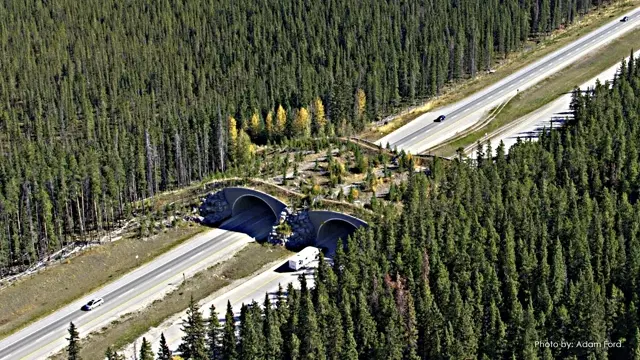2014-10-08
[public] 1.26M views, 19.4K likes, dislikes audio only
Humans have created a lot of barriers in the animal world, here are some innovative solutions for helping the chicken (or monkey, or crab, or deer...) cross the road.
CREDITS
*********
Production and Writing Team: Alex Reich, Peter Reich, Emily Elert, Ever Salazar, Kate Yoshida, and Henry Reich
Music: Nathaniel Schroeder: http://www.soundcloud.com/drschroeder
And thanks to Subbable supporter Raed Massoud for helping make MinuteEarth possible!
SUPPORT MINUTEEARTH
**************************
If you like what we do, you can help us!:
- Become our patron: https://patreon.com/MinuteEarth
- Our merch: http://dftba.com/minuteearth
- Our book: https://minuteearth.com/books
- Share this video with your friends and family
- Leave us a comment (we read them!)
OUR LINKS
************
Youtube | https://youtube.com/MinuteEarth
TikTok | https://tiktok.com/@minuteearth
Twitter | https://twitter.com/MinuteEarth
Instagram | https://instagram.com/minute_earth
Facebook | https://facebook.com/Minuteearth
Website | https://minuteearth.com
Apple Podcasts| https://podcasts.apple.com/us/podcast/minuteearth/id649211176
REFERENCES
**************
Andrews, A. (1990) Fragmentation of Habitat by Roads and Utility Corridors: A Review. Australian Zoologist 26(3): 130-141. http://www.shanespark.com/documents/Andrews%20(1990)%20Fragmentation%20of%20Habitat%20by%20Roads%20and%20Utility%20Corridors%20A%20Review.pdf
Brink, J. (2013) The Barnett site: A stone drive lane communal pronghorn trap on the Alberta Plains, Canada. Quaternary international 29:24–35. http://www.sciencedirect.com/science/article/pii/S1040618213000414
Dyer, S.J., O'Neil J.P., Wasel, S.M., and Boutin, S. (2002) Quantifying barrier effects of roads and seismic lines on movement of female woodland caribou in Northeastern Alberta. Canadian Journal of Zoology. 80: 839-845. http://www.legassembly.gov.yk.ca/pdf/rbhf_reid_Dyer_et_al_2002_CJZ.pdf
Forman, R.T. and Alexander, L.E. (1998) Roads and their major ecological effects. Annual Review of Ecology and Systematics 29: 207-231. http://www.annualreviews.org/doi/abs/10.1146/annurev.ecolsys.29.1.207
James, A.R.C. and Stuart-Smith, A.K. (2000) Distribution of caribou and wolves in relation to linear corridors. The Journal of Wildlife Management 64: 154-159. http://www.jstor.org/discover/10.2307/3802985?uid=3739824&uid=2&uid=4&uid=3739256&sid=21104244679461
O'Shea, J.M., Lemke, A.K., Sonnenburg, E.P., Reynolds, R.G., and Abbott, B.D. (2014) A 9,000-year-old caribou hunting structure beneath Lake Huron. Proceedings of the National Academy of Sciences 111(19): 6911-6915. http://www.pnas.org/content/111/19/6911
Pruett, C.L., Patten, M.A., and Wolfe, D.H. (2009) Avoidance behavior by prairie grouse: Implications for wind energy development. Conservation Biology 23:1253–1259. http://www.ncbi.nlm.nih.gov/pubmed/19500121
Tyler, N., Stokkan, K.A., Hogg, C., Nellemann, C., Vistnes, A.I., Jeffery, G. (2014) Ultraviolet vision and avoidance of power lines in birds and mammals. Conservation Biology 28(3): 630-631. http://onlinelibrary.wiley.com/doi/10.1111/cobi.12262/full
/youtube/channel/UCeiYXex_fwgYDonaTcSIk6w
https://www.patreon.com/minuteearth
/youtube/video/4DF94Wvtekk

